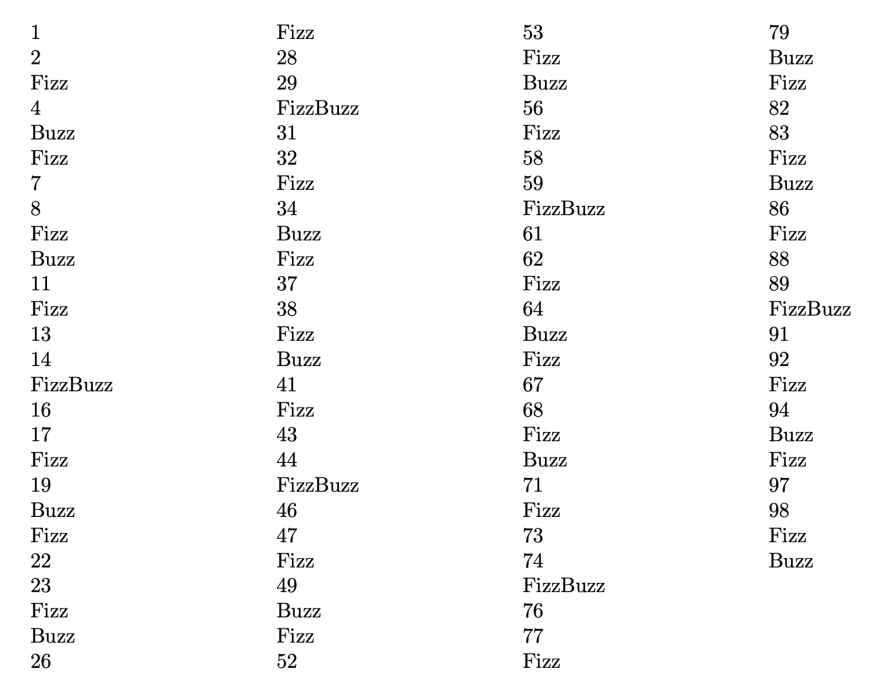An Interest In:
Web News this Week
- April 16, 2024
- April 15, 2024
- April 14, 2024
- April 13, 2024
- April 12, 2024
- April 11, 2024
- April 10, 2024
100 Languages Speedrun: Episode 28: TeX
TeX (pronounced like "tech") is a typesetting system, which is still used for writing research papers in Mathematics, Computer Science, Physics, and related disciplines, and pretty much nothing else. Everyone else moved on to either WYSIWYG editors like Word, or to HTML, or maybe Markdown or something like that. But it still survives in its niche.
Like every typesetting system, it comes with its own embedded programming language, and that's what we're going to use.
Technically TeX is just the original system, and we'll also be using a lot of *TeX things (MacTeX, LaTeX, pdftex etc.), but that's meaningless distinction, so I won't mention it anymore.
Hello, World!
\documentclass{minimal}
ewcommand\hello[1]{Hello, #1!}\begin{document}\hello{World}\end{document}Which with pdflatex hello.tex generates a PDF page with the text "Hello, World!" (only relevant part shown):
What's going on here:
\documentclass{minimal}defines the kind of document we're making - as we're not really interested in any typesetting, we can just useminimal. The most common type for actual documents would bearticle.- then follows basically equivalent of HTML
<head>part \begin{document} ... \end{document}is like HTML<body> ... </body>- We define
\hellocommand with
ewcommand\hello[1]{Hello, #1!}[1]says it takes one argument, then in the function body#1refers to that argument. - We call the function with
\hello{World}- there are no parentheses here, we defined explicitly it takes exactly one argument.
Loop
Let's try to setup a loop from 11 to 20. Obviously the system comes with lists already (numbered with \begin{enumerate} \item A \item B \end{enumerate}, bulleted with \begin{itemize} \item A \item B \end{itemize}, and all the other usual kinds), but we'll be doing a FizzBuzz shortly.
\documentclass{minimal}\setlength{\parindent}{0pt}\usepackage{ifthen}%
umberloop{A}{B} prints all numbers from A to B
ewcommand
umberloop[2]{
ewcounter{i} \setcounter{i}{#1} \whiledo{
ot{\value{i}>#2}} { hei \ifthenelse{\equal{#2}{hei}}{.}{,} \stepcounter{i} }}\begin{document}
umberloop{10}{100}\end{document}Which generates this:
What's going on:
- TeX has annoying default of having paragraph indent, we need to get rid of it with
\setlength{\parindent}{0pt} - we import a package called
ifthenwith\usepackage{ifthen}- it contains some control structures\ifthenelseand\whiledo %indicates line comments- we define command
umberloop - inside it we define integer variable ("counter")
iand set it to#1(first passed argument) - there's nothing like
... <= ...in a loop, so loop condition must be
ot{... > ...} - inside the loop body,
heimeans "current value oficounter" \ifthenelse{\equal{#2}{hei}}{.}{,}prints appropriate separator -,normally, but.in the final iteration.\stepcounter{i}increases counteriby1each time
FizzBuzz
\documentclass{minimal}\setlength{\parindent}{0pt}\usepackage{ifthen}\usepackage{intcalc}\usepackage{multicol}% \fizzbuzz{N} prints Fizz, Buzz, FizzBuzz, or N, according to the usual rules
ewcommand\fizzbuzz[1]{ \ifthenelse{\equal{\intcalcMod{#1}{15}}{0}}{FizzBuzz}{ \ifthenelse{\equal{\intcalcMod{#1}{5}}{0}}{Buzz}{ \ifthenelse{\equal{\intcalcMod{#1}{3}}{0}}{Fizz}{#1} } }}% \fizzbuzzloop{A}{B} prints all FizzBuzz entries from A to B
ewcommand\fizzbuzzloop[2]{
ewcounter{i} \setcounter{i}{#1} \whiledo{
ot{\value{i}>#2}} { \fizzbuzz{hei} \linebreak \stepcounter{i} }}\begin{document}\begin{multicols}{4}\fizzbuzzloop{1}{100}\end{multicols}\end{document}Which generates this:
A few things are going on here:
- we import package for integer math
\usepackage{intcalc} - we import package for multi-column layout
\usepackage{multicol} \fizzbuzz{N}does the FizzBuzz for one number\fizzbuzzloop{A}{B}does the FizzBuzz for all numbers from A to B, with line breaks in between- we wrap it all in a 4-column layout so the screenshot looks better
Fibonacci
\documentclass{minimal}\setlength{\parindent}{0pt}\usepackage{ifthen}\usepackage{intcalc}% \fib{N} returns the Nth Fibonacci number
ewcounter{j}
ewcounter{fiba}
ewcounter{fibb}
ewcounter{fibc}
ewcommand\fib[1]{ \setcounter{j}{1} \setcounter{fiba}{1} \setcounter{fibb}{1} \whiledo{\value{j} < #1} { \setcounter{fibc}{\intcalcAdd{hefiba}{hefibb}} \setcounter{fiba}{hefibb} \setcounter{fibb}{hefibc} \stepcounter{j} } hefiba}% \fibloop{A}{B} prints all Fibonacci numbers from A to B
ewcommand\fibloop[2]{
ewcounter{i} \setcounter{i}{#1} \whiledo{
ot{\value{i}>#2}} { \fib{hei} \linebreak \stepcounter{i} }}\begin{document}\raggedright\fibloop{1}{20}\end{document}Which generates this:
TeX has serious problems with recursion, so we do a loop calculation instead. Oh and while previous code might have implied that
ewcounter#1 etc. arguments.
Should you use TeX?
Only if you're forced to by your journal. Otherwise no, it's completely obsolete.
Historically its primary strength was math. In particular, supporting made-up mathematical notation each researcher would come up with (the normal notation was supported by everything anyway). But nowadays, other systems can do that too. For everything else, TeX was never good.
TeX also seems to largely abandoning its existing programming language and embedding much saner Lua instead.
Even as an esoteric programming language, TeX's programming language doesn't really do anything too interesting. If you want a fun challenge, writing Postscript is likely to provide a lot better one.
Code
All code examples for the series will be in this repository.
Original Link: https://dev.to/taw/100-languages-speedrun-episode-28-tex-b1j
Dev To
 An online community for sharing and discovering great ideas, having debates, and making friends
An online community for sharing and discovering great ideas, having debates, and making friendsMore About this Source Visit Dev To





